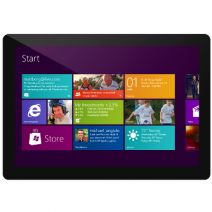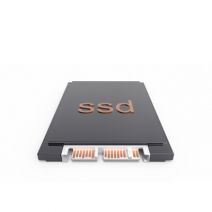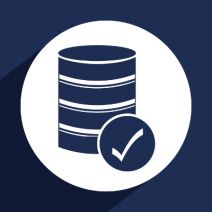SMART Blog
 When was the last time you let your phone’s battery die on you? Due to the takeover of mobile technology in the workplace, smartphones have basically become inseparable from their owners, particularly the ever-busy business owner. Despite the imperative role that smartphones have in the workplace, you should know that there are several battery myths that might be holding you back from achieving maximum efficiency with your device.
When was the last time you let your phone’s battery die on you? Due to the takeover of mobile technology in the workplace, smartphones have basically become inseparable from their owners, particularly the ever-busy business owner. Despite the imperative role that smartphones have in the workplace, you should know that there are several battery myths that might be holding you back from achieving maximum efficiency with your device.
 Mobile WiFi is an imperative part of how you get things done while you’re out and about, but did you know that you can use your mobile device as a hotspot? This is one of the many features that modern smartphones come equipped with that are designed to help you remain as productive as possible. There are three ways of tethering your device to your smartphone to take advantage of a mobile WiFi hotspot, but which one is the most efficient?
Mobile WiFi is an imperative part of how you get things done while you’re out and about, but did you know that you can use your mobile device as a hotspot? This is one of the many features that modern smartphones come equipped with that are designed to help you remain as productive as possible. There are three ways of tethering your device to your smartphone to take advantage of a mobile WiFi hotspot, but which one is the most efficient?
 With more businesses moving toward Bring Your Own Device (BYOD) than ever before, the workforce grows more mobile by the day. These workers generally need a network connection in order to access important data and applications that are crucial to their day-to-day responsibilities. One way to do this is to use your service provider’s mobile data plan, but this can be both expensive and draining when used excessively.
With more businesses moving toward Bring Your Own Device (BYOD) than ever before, the workforce grows more mobile by the day. These workers generally need a network connection in order to access important data and applications that are crucial to their day-to-day responsibilities. One way to do this is to use your service provider’s mobile data plan, but this can be both expensive and draining when used excessively.
 When was the last time you provided your business with improved technology that offers a great return on investment? If your business is using software and hardware that hasn’t been updated in several years, the same technology that’s necessary for your operations could be holding you back from achieving optimal efficiency.
When was the last time you provided your business with improved technology that offers a great return on investment? If your business is using software and hardware that hasn’t been updated in several years, the same technology that’s necessary for your operations could be holding you back from achieving optimal efficiency.
 It might seem like the obvious reason for hacks and data loss is due to technology being unpredictable, but in all reality, it’s important to remember that some of the problems we experience with technology come from the people operating it. To this end, it’s important to realize that the people operating technology can also protect themselves from hackers.
It might seem like the obvious reason for hacks and data loss is due to technology being unpredictable, but in all reality, it’s important to remember that some of the problems we experience with technology come from the people operating it. To this end, it’s important to realize that the people operating technology can also protect themselves from hackers.
 Despite the fact that 255 million people use Twitter, some businesses want nothing to do with it. They see it as little more than a waste of time. However, these anti-Twitter activists fail to realize that the social media outlet has an unmistakably large influence in the marketing industry. Unlike Facebook, Twitter gives you the opportunity to customize your audience to suit the precise needs of your business, and the best part of this is that it’s completely free.
Despite the fact that 255 million people use Twitter, some businesses want nothing to do with it. They see it as little more than a waste of time. However, these anti-Twitter activists fail to realize that the social media outlet has an unmistakably large influence in the marketing industry. Unlike Facebook, Twitter gives you the opportunity to customize your audience to suit the precise needs of your business, and the best part of this is that it’s completely free.
 You can’t have IT without information, you can’t have information without data, and technology is what creates data so that you can better use your company’s technology to increase sales. Got it? Understanding the flow of data can be confusing. It’s important to have a handle on it so you can leverage your data for the success of your business.
You can’t have IT without information, you can’t have information without data, and technology is what creates data so that you can better use your company’s technology to increase sales. Got it? Understanding the flow of data can be confusing. It’s important to have a handle on it so you can leverage your data for the success of your business.
 Smartphones and tablets are the new norm. Most professionals have begun to utilize mobile devices to accomplish tasks when they are away from their work PC. Not to say that these devices offer all that much in the way of productivity. Sure, there are plenty of software titles either ported over from the PC or developed directly for the mobile environment, but sometimes these titles don’t offer the functionality, or they take up too many of the device’s resources to be of much use. With these variables to consider, manufacturers are searching for the best way to deliver devices with enhanced productivity capabilities, right out of the box. One of these manufacturers is Microsoft.
Smartphones and tablets are the new norm. Most professionals have begun to utilize mobile devices to accomplish tasks when they are away from their work PC. Not to say that these devices offer all that much in the way of productivity. Sure, there are plenty of software titles either ported over from the PC or developed directly for the mobile environment, but sometimes these titles don’t offer the functionality, or they take up too many of the device’s resources to be of much use. With these variables to consider, manufacturers are searching for the best way to deliver devices with enhanced productivity capabilities, right out of the box. One of these manufacturers is Microsoft.
 If you’re in the market for a new computer, then you’re going to have to make a decision: Go with a traditional hard drive (HDD), or a solid state drive (SSD). While a computer equipped with an HDD will cost you less money, an SSD promises to faster speeds and a longer lifespan. This begs the question, is SSD worth the extra money?
If you’re in the market for a new computer, then you’re going to have to make a decision: Go with a traditional hard drive (HDD), or a solid state drive (SSD). While a computer equipped with an HDD will cost you less money, an SSD promises to faster speeds and a longer lifespan. This begs the question, is SSD worth the extra money?
 The modern business world is constantly evolving, and one of the revolutions that have allowed for this is virtualization. You might have heard about server virtualization or even desktop virtualization. Did you know that you can virtualize your applications, too? In fact, it can be one of the most valuable uses for virtualization, especially considering the upcoming Windows Server 2003 end-of-support date.
The modern business world is constantly evolving, and one of the revolutions that have allowed for this is virtualization. You might have heard about server virtualization or even desktop virtualization. Did you know that you can virtualize your applications, too? In fact, it can be one of the most valuable uses for virtualization, especially considering the upcoming Windows Server 2003 end-of-support date.
 Everything is fine and dandy in your office. Everyone is working at a desirable rate, and you’re getting more business than ever before. Then, disaster strikes. Your server overheats, causing irreparable hardware failure, and you’re immediately caught in a pickle. Operations screech to a halt, data is lost, and you’re stuck in a situation that puts your business’s future in jeopardy. Of course, all of this can be quickly remediated with a quality disaster recovery plan.
Everything is fine and dandy in your office. Everyone is working at a desirable rate, and you’re getting more business than ever before. Then, disaster strikes. Your server overheats, causing irreparable hardware failure, and you’re immediately caught in a pickle. Operations screech to a halt, data is lost, and you’re stuck in a situation that puts your business’s future in jeopardy. Of course, all of this can be quickly remediated with a quality disaster recovery plan.
 Technology is an imperative part of your business’s operations, but sometimes things don’t go quite as planned. It can fail when you least expect it to, and you’d really hate to pay your IT provider for an on-site visit. What can you do when you’re in a technology bind and need to keep operations moving forward?
Technology is an imperative part of your business’s operations, but sometimes things don’t go quite as planned. It can fail when you least expect it to, and you’d really hate to pay your IT provider for an on-site visit. What can you do when you’re in a technology bind and need to keep operations moving forward?
 We all know the pain of contriving a brand new business solution. It takes time to implement and it can be an unnecessary hurdle to greater operational efficiency. Therefore, the best way to make the most out of a brand new solution is to use one that requires minimal setup, and can be implemented immediately into your business strategy.
We all know the pain of contriving a brand new business solution. It takes time to implement and it can be an unnecessary hurdle to greater operational efficiency. Therefore, the best way to make the most out of a brand new solution is to use one that requires minimal setup, and can be implemented immediately into your business strategy.
 Cloud computing is a revolution which is bringing about a change in the way small businesses view the consumption and analysis of data. More businesses than ever before have joined the cloud trend. However, some are finding that their cloud solution isn’t ideal, or they have presumptions about the cloud that simply aren’t true.
Cloud computing is a revolution which is bringing about a change in the way small businesses view the consumption and analysis of data. More businesses than ever before have joined the cloud trend. However, some are finding that their cloud solution isn’t ideal, or they have presumptions about the cloud that simply aren’t true.
 It’s well known in the business world that outsourcing your IT will yield significant savings for your IT budget. However, did you know that the benefits of outsourcing IT go beyond monetary savings? For example, gaining access to a new skillset is just one valuable benefit to outsourced IT that doesn’t have a column in your budget.
It’s well known in the business world that outsourcing your IT will yield significant savings for your IT budget. However, did you know that the benefits of outsourcing IT go beyond monetary savings? For example, gaining access to a new skillset is just one valuable benefit to outsourced IT that doesn’t have a column in your budget.








